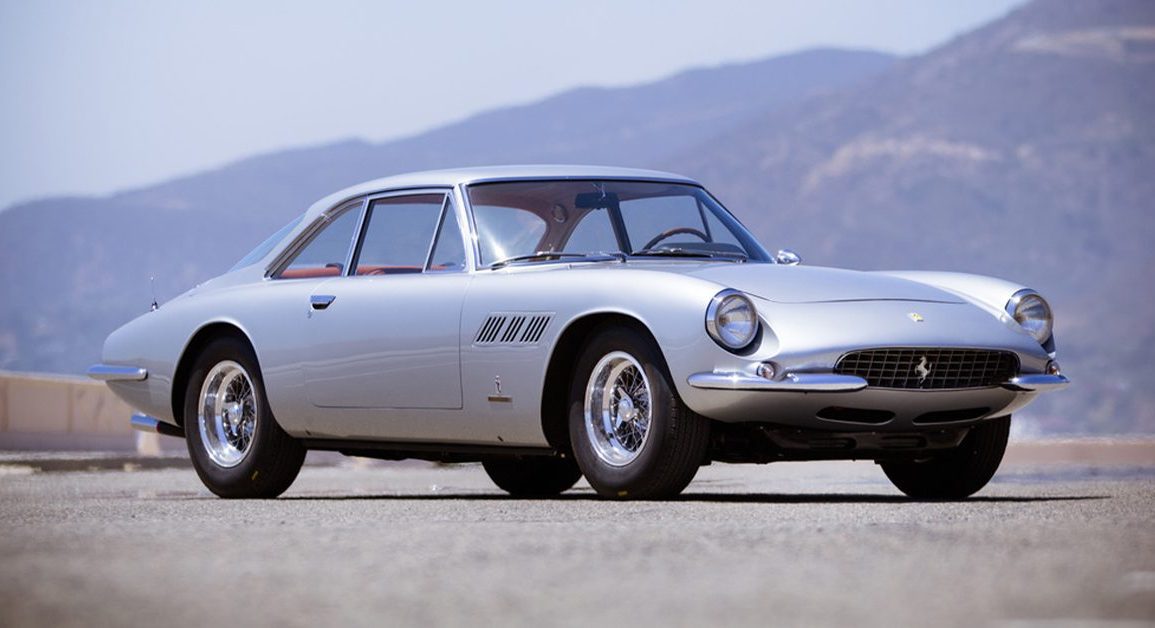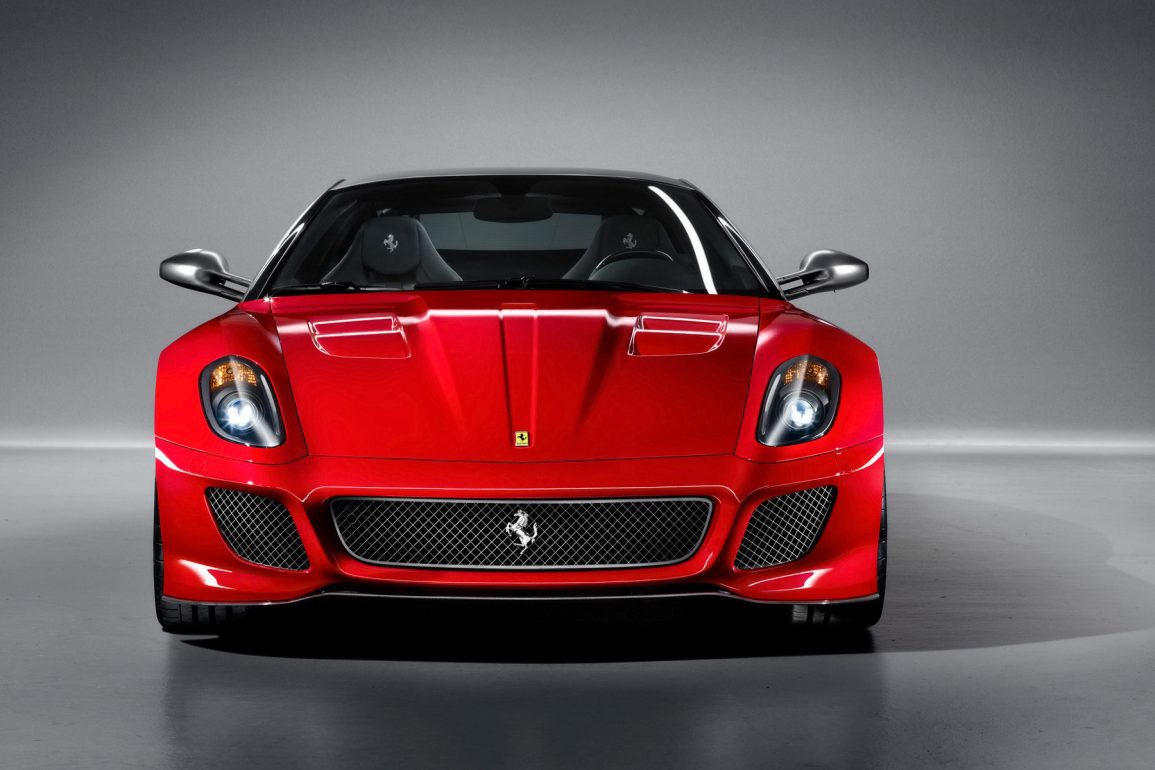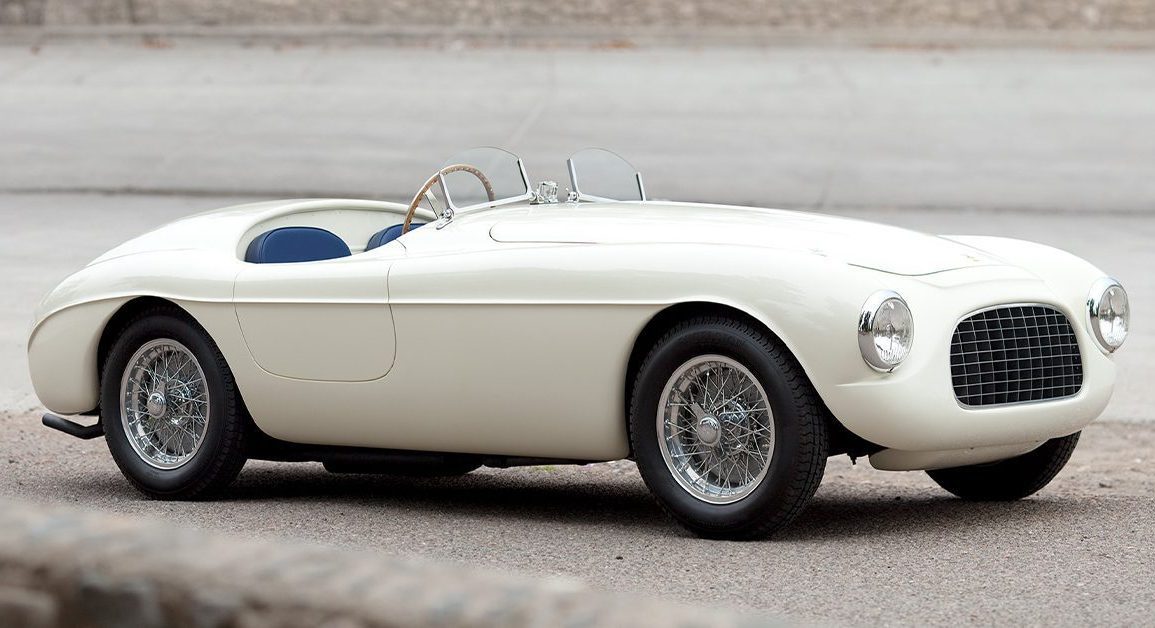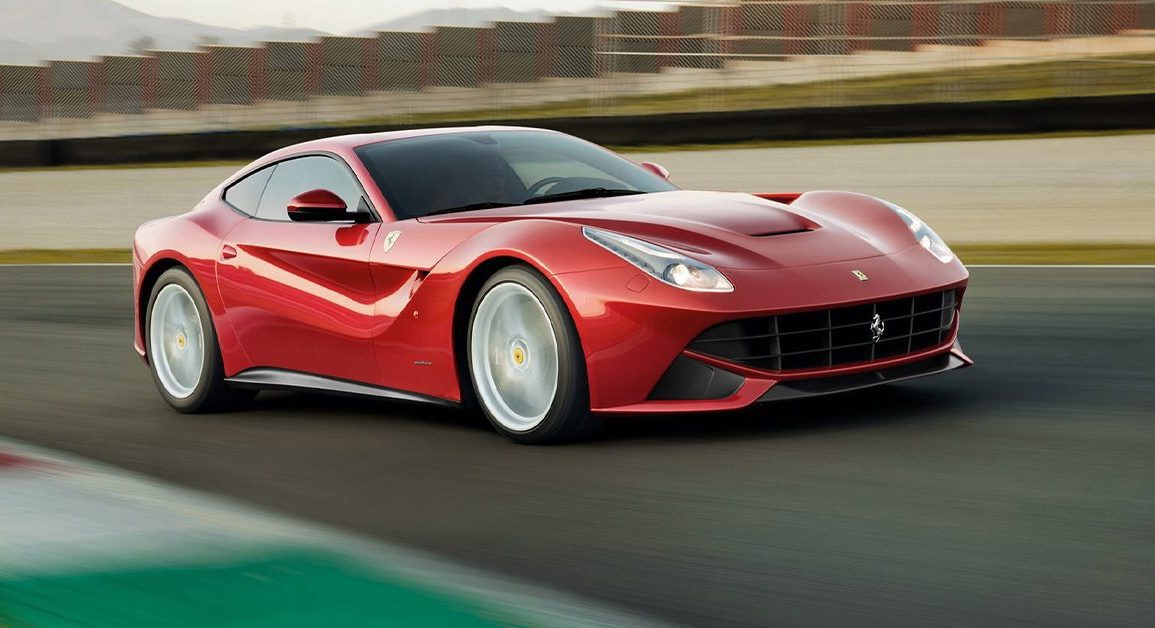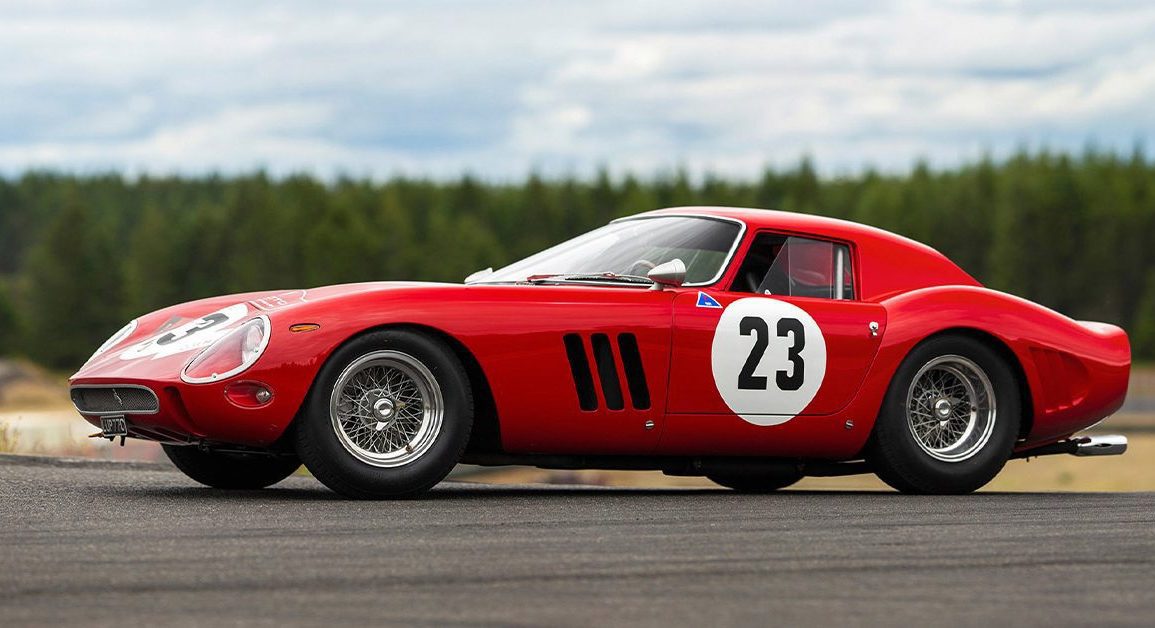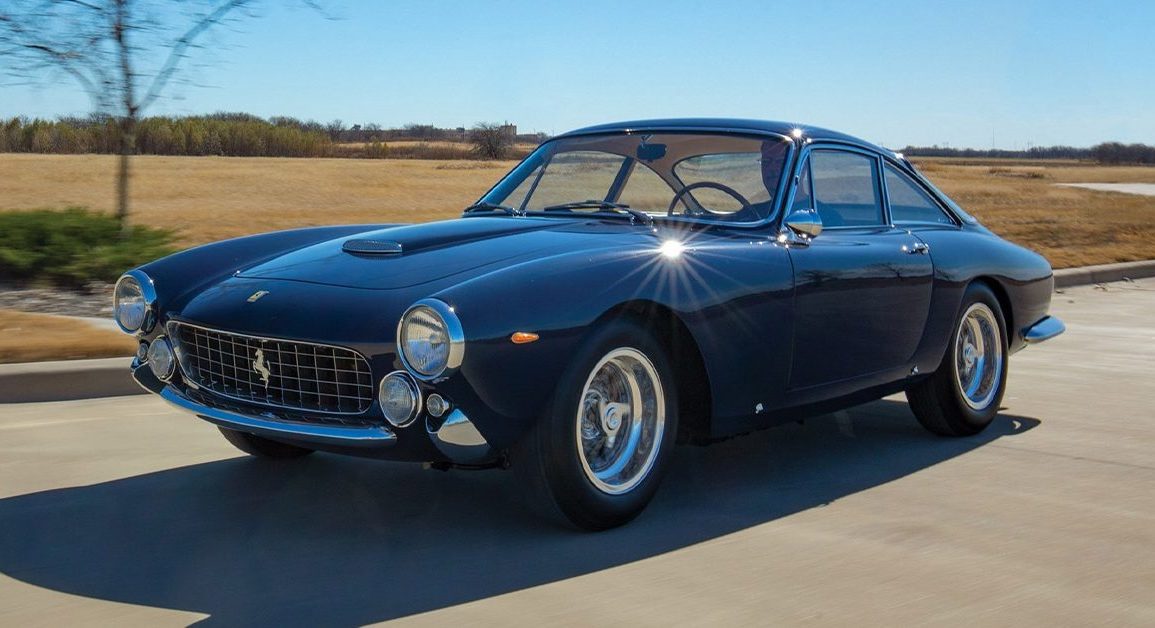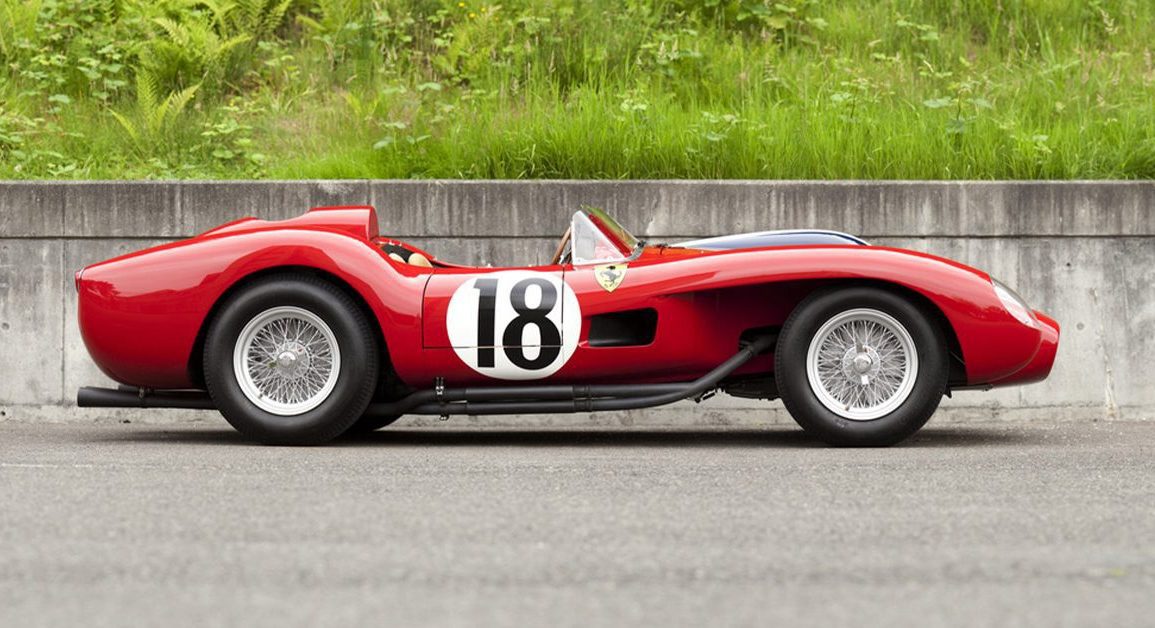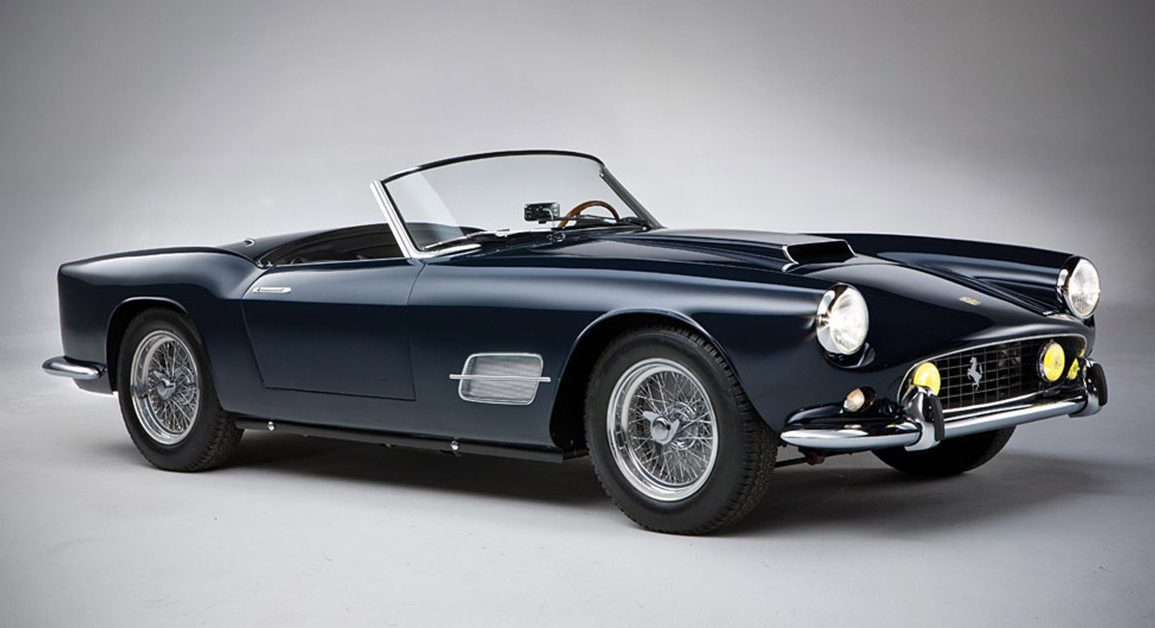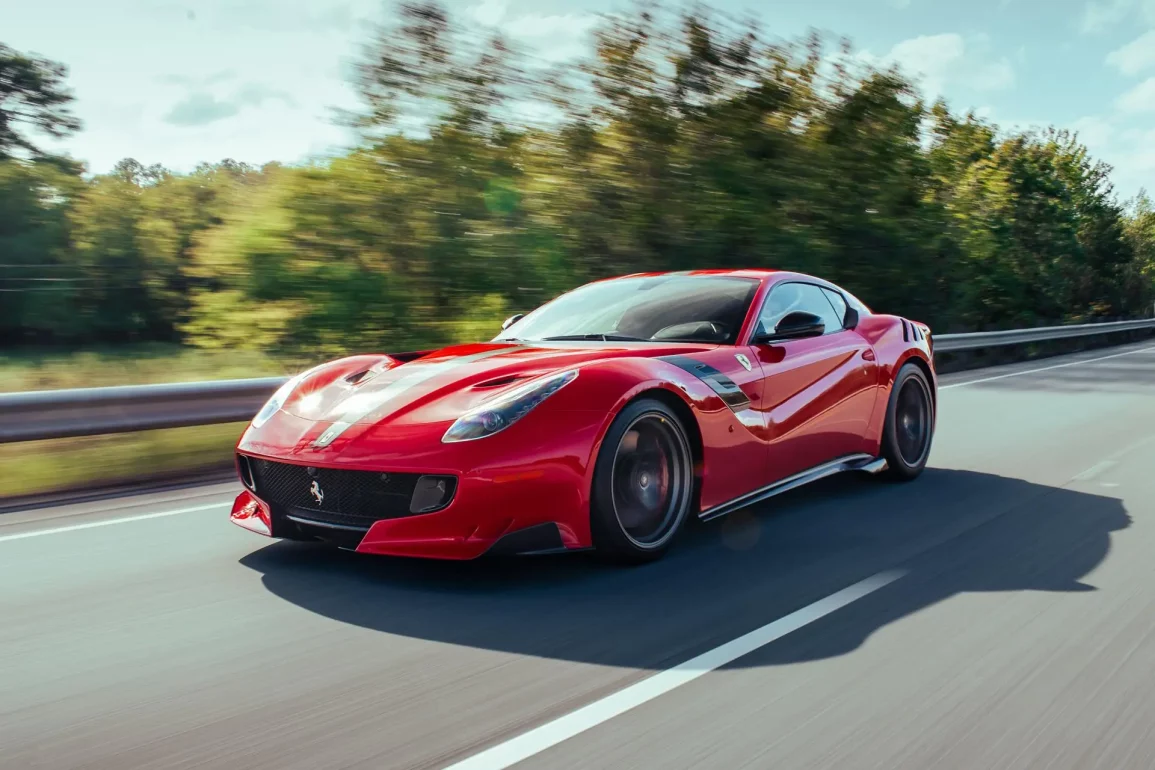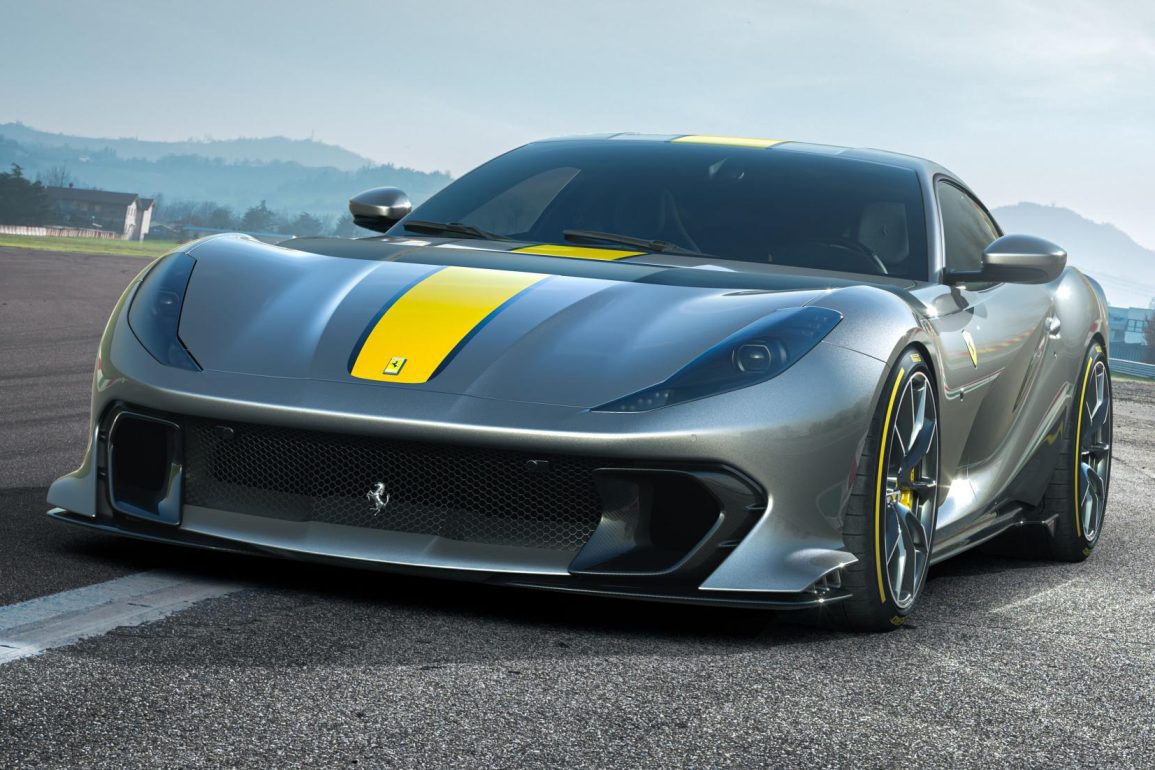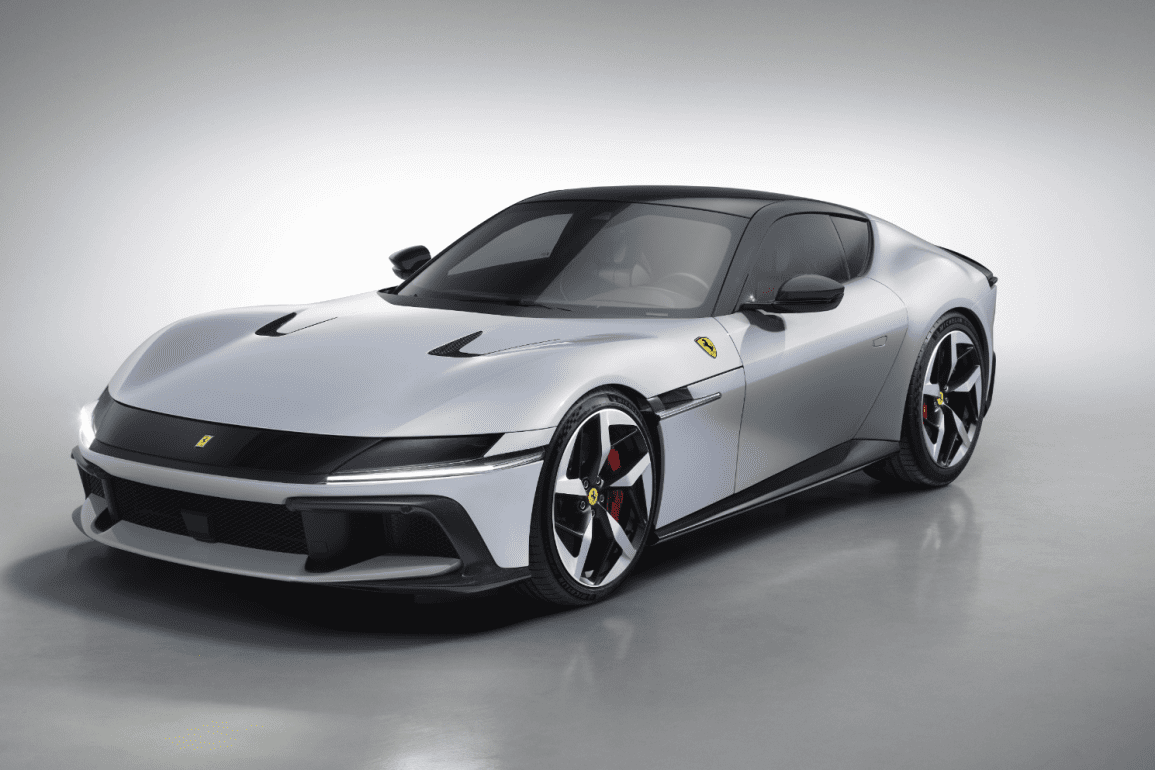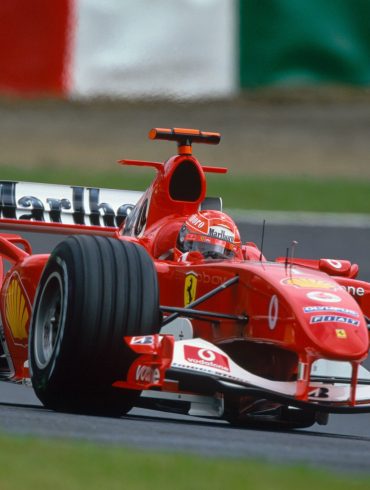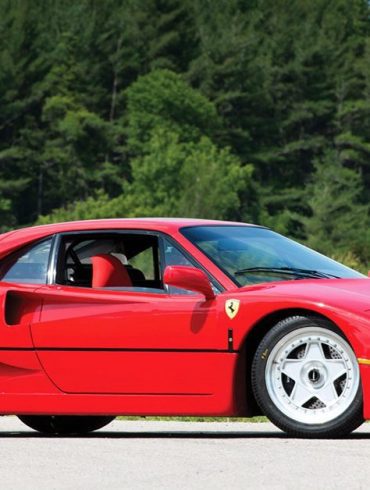The Greatest Front-Engine Ferraris Ever
The Best Front-Engined Ferraris: Timeless Power and Elegance
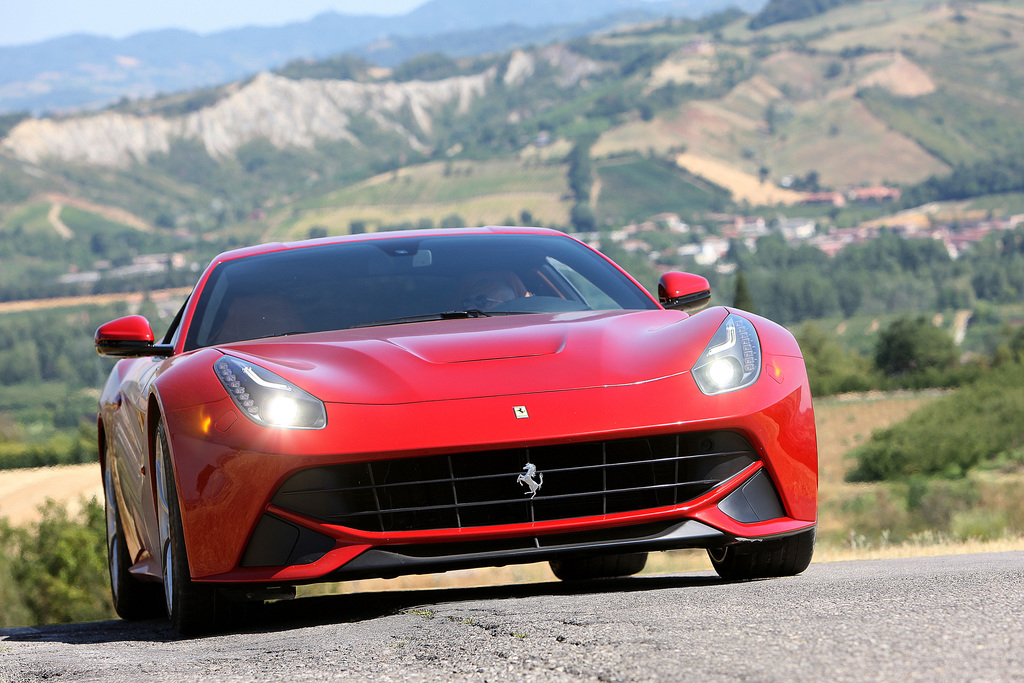
Ferrari has set the benchmark for what a mid-engine supercar can and should be.
About Our Selections
Ferrari is one of the world's most iconic and respected car brands, and their front-engined models are some of their most beloved. These cars are known for their stunning design, powerful engines, and exhilarating performance. Ferrari's front-engined cars have always been some of the best in the world and have helped define the category of "supercar." In this article, we'll explore some of Ferrari's finest front-engined creations. These vehicles are true works of art in automobile design and engineering.
Ferrari’s legacy of front-engined cars is a testament to the brand’s mastery of combining performance, luxury, and stunning design. While the mid-engine layout has dominated many supercar conversations, Ferrari’s front-engine masterpieces offer a different kind of driving experience—one that balances raw power with refined grand touring capability. In this article, we’ll explore the best front-engined Ferraris ever made, from classic V12 grand tourers to modern-day powerhouses, showcasing the models that have become icons in Ferrari’s illustrious history.
Ferrari 550 Maranello
Sleeker never looked so good
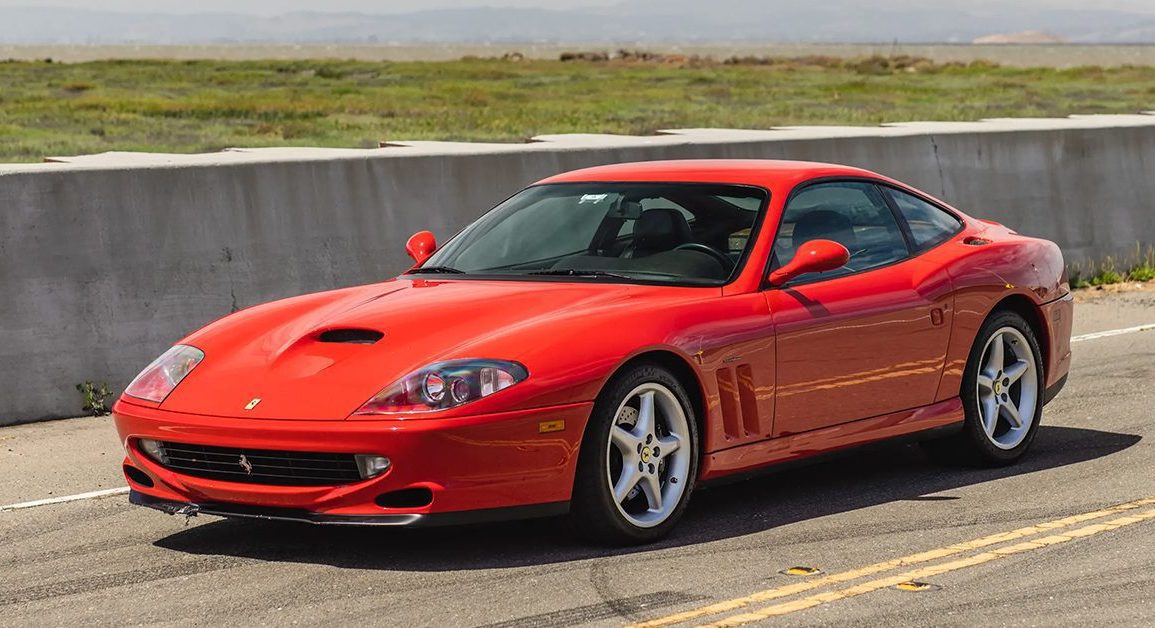
Why We Picked It:
The 550 Maranello is a special car for Ferrari. With its front engine/rear-wheel drive platform, the 550 brought back a classic drivetrain layout not used since the Ferrari 365 GTB/4 Daytona production ceased in 1973. The car was designed for grand touring with higher comfort than the F355 and F50 produced concurrently.
Named in honor of Ferrari’s headquarters in Maranello, the 550 was first introduced in 1996. The car used technology from the 456 2+2 but featured an entirely new 5.5-liter V12 that could produce nearly 500 bhp. The steel chassis is a modified version of the one in the F456 and supports an aluminum alloy body.
This engine is mated to a 6-speed manual transaxle gearbox, powering the rear wheels. The 0 to 60 mph time is 4.3 seconds, with a top speed of 199 mph. The Ferrari 550 Maranello has a classic and elegant design that has stood the test of time.
Specifications:
Price: $150,000-$250,000
Engine: 5.5L V12
Power: 480 hp
Torque: 418 lb-ft
Transmission: 6-Speed Manual Transaxle
Curb Weight: 3,726 lbs
Highlights:
The Ferrari 550 Maranello has excellent performance and handling, making it a delightful car to drive.
The 550 Maranello boasts one of the sleekest, most unassuming designs of any Ferrari that has stood the test of time. The car has a classic and elegant look that is both understated and sophisticated.
Learn More:
Ferrari 500 Superfast
One of the most stunning Ferraris ever
Why We Picked It:
Ferrari's flagship tourer, the 500 Superfast, picked up where the 400 and 410 Super America series left off. With its roomy cabin and powerful V12 engine, it was Ferrari's concept of a perfect cruiser.
Pininfarina only made two of these cars monthly because they were rarely requested, despite being twice as expensive as the more sporty 275 GTB. The bare chassis was shipped to the Pininfarina facility in Turin, where the bodywork and interiors were completed.
The steel chassis was based on the original Aerodinamica design introduced with the Ferrari 400 series. It was the first Ferrari to have its now-iconic oval grill, flared fenders, and twin bumpers. Colombo created a new Tipo 208 SOHC engine with a displacement of five liters to set the Superfast apart from Ferrari's 330 GT 2+2.
The vehicle's top speed of 174 mph (280 kph) was made possible by its powerful 400-horsepower engine. This was coupled to a four-speed manual gearbox with an overdrive setting. The chassis was a takeoff from the 330 GT 2+2.
Specifications:
Price: $1,900,000
Engine: 5.0L V12
Power: 400 hp
Torque: 351 lb-ft
Transmission: 5-Speed Semi-Automatic
Curb Weight: 3,086 lbs
Highlights:
The 500 Superfast engine was unique to the model. It was designed by Gioacchino Colombo and Aurelio Lampredi and produced 400 horsepower. This made it one of the most powerful cars on the road at the time.
Only 25 Series I Superfasts were constructed due to the enormous price and intricate detail work required from Pininfarina.
Learn More:
Ferrari 599 GTO
A road-legal Ferrari racer
Why We Picked It:
An extreme V12 berlinetta, the 599 GTO was built to meet a demanding performance specification. At the time, it was the company's fastest road car ever, with a 0 to 60mph time of 3.35 seconds, reaching 208 top speed. The 599 GTO was a production version of the advanced experimental track vehicle, the 599XX.
The GTO's groundbreaking chassis design integrated a handling setup optimized for responsiveness near the limit with very complex electronic controls, a first in the production car industry. The result is a chassis with excellent feedback and nearly no understeer.
The 599 GTO's engine is a direct descendant of the 599XX unit, with the appropriate adjustments made for road-going homologation. The 5999 cc 65-degree V12 engine churns out 661 horsepower and 457 lb-ft of torque, and it delivers a continuous, linear surge of power from midrange to redline without sacrificing adaptability.
The 599XX's revised crankshaft and racing-style intake system and its modified manifold and short inlet tracts were instrumental in achieving this outcome by maximizing power at high RPM with minimal loss.
Specifications:
Price: $750,000-$900,000
Engine: 6.0L V12
Power: 661 hp
Torque: 457 lb-ft
Transmission: 6-Speed Automatic
Curb Weight: 3,539 lbs
Highlights:
New aerodynamic improvements, such as the wheel doughnuts, which increase aerodynamic efficiency and promote brake cooling, were installed on the 599 GTO, as were the latest generation of carbon-ceramic brakes, which are lighter and give superior performance.
The 599 GTO's more aggressive character was also evident in the car's powerful V12 engine and in a few design details that harken back to the 599XX.
Learn More:
Ferrari 166 MM Barchetta
The car that put Ferrari on the map
Why We Picked It:
To commemorate their first significant success at the prestigious 1948 Mille Miglia, Ferrari upgraded their successful 166 Sport and made a series of cars called the 166 MM. These contributed more than any other previous type, scoring many of Ferrari's first international victories and establishing the company as a serious manufacturer of sports cars.
For their new series, Ferrari outsourced production of the bodies to Touring of Milan, who made 25 roadsters using their patented Superleggera technique. It fixed aluminum-alloy panels directly to a tubular space frame, which was both light and rigid.
From 1948 to 1950, Ferrari produced the 166 MM Barchetta, which became a legendary sports car. It was one of the first Ferrari models to achieve international success, and it helped establish the company as a major player in sports car racing.
A 2.0L V12 engine that produced 140 horsepower powered the 166 MM Barchetta. This gave the car a top speed of 140 mph, which was very fast for its time. The car also had a lightweight aluminum body, making it agile and responsive.
Specifications:
Price: $10,000,000
Engine: 2.0L V12
Power: 140 hp
Torque: 117 lb-ft
Transmission: 5-Speed Manual
Curb Weight: 1,984 lbs
Highlights:
After Luigi Chinetti convinced Enzo, who was concerned about the car's durability, to enter it in the 24 Hours of Le Mans, Ferrari became a household name worldwide.
The 166 MM Barchetta was a very successful racing car. It won numerous races, including the Mille Miglia, in 1948 and 1949. The car was also very popular with private owners and was considered one of the most desirable sports cars of its time.
Learn More:
Ferrari 365 GTB/4 Daytona
The last front V12
Why We Picked It:
The 365 GTB/4 was Ferrari's final front-engine V12 from the classic era. It debuted at the 1968 Paris Motor Show and set the standard for fast cars with its top speed of 170 miles per hour.
The 365's V12 was located up front like the 275 GTB/4, but it was bored out to 3.6 liters instead of 2.7. Four-wheel disc brakes, independent suspension, and a transaxle situated in the back helped keep the front-to-rear weight distribution of both vehicles even.
Lionardi Fioavanti was responsible for the car's aesthetic, and Pininfarina made painstaking adjustments to Fioravanti's lines. The defining characteristics were the long hood, short tail, and sharp nose. This nose used to have four lights hidden behind a Plexiglas cover, later replaced with pop-up headlights. The 4.4-liter V12 engine's 363 horsepower and 319 lb-ft of torque were responsible for the vehicle's top speed of 170 mph.
Its contemporary supercar, the Lamborghini Miura, with its transversely mounted, quad-cam V12 engine, made the Daytona look antiquated but lacked in outrageousness; it made up with driveability.
Specifications:
Price: $800,000-$2,000,000
Engine: 4.4L V12
Power: 363 hp
Torque: 319 lb-ft
Transmission: 4-Speed Manual
Curb Weight: 3,600 lbs
Highlights:
The Ferrari 365 GTB/4 Daytona was designed to focus on handling and agility. It had a balanced weight distribution and a sophisticated suspension system.
This was the final V-12 Ferrari created before Fiat acquired a 50% stake in the business and before rules significantly impacted automotive design.
Learn More:
Ferrar F12berlinetta
The ultimate front-engine Ferrari supercar
Why We Picked It:
The F12 Berlinetta, introduced for the 2013 model year, was one of the most anticipated cars of 2012. Ferrari's third iteration of the GT line followed the 599 GTB Fiorano and the 550 Maranello. It was the most powerful and high-performance Ferrari road car ever thanks to the incredibly efficient engine—in terms of mechanical, combustion, and fluid-dynamics efficiency—which, together with advanced vehicle architecture, aerodynamics, components, and electronic controls, guaranteed unsurpassed driving involvement, whatever the road or track.
The F12 outperforms the 599 GTB Fiorano in every measurable way. Improvements were made to the vehicle's engine output, aerodynamics, fuel efficiency, chassis rigidity, safety features, and the rear hatch's ability to accommodate luggage. The car's aluminum alloy space frame chassis and body were designed by Pininfarina and Ferrari's design studio.
The 6.3-liter V12 engine is the car's crowning glory; it generates 750 horsepower without needing turbochargers or superchargers. The power is transmitted to the rear wheels via a dual-clutch transmission and an active electronic differential.
Specifications:
Price: $170,000-$360,000
Engine: 6.3L V12
Power: 725 hp
Torque: 508 lb-ft
Transmission: 7-Speed Automatic
Curb Weight: 3,594 lbs
Highlights:
Ferrari's engineers reduced the F12's rear volume by redesigning the rear suspension and gearbox, shortening the wheelbase, and lowering the engine, dashboard, and seats in the chassis.
The F12berlinetta is a tiny automobile that pushes the envelope in terms of aerodynamic efficiency because of its low center of gravity and rearwardly mounted rear axle.
Learn More:
Ferrari 250 GTO
The Holy Grail
Why We Picked It:
One of the ultimate production road racers was the Ferrari 250 GTO. Classic proportions and a striking profile give this automobile instant recognition, and its unparalleled racing success only adds to its legend.
In addition, only 36 Ferrari 250 GTOs were ever made, making it the most sought-after Ferrari model due to its innovative design and significant record in road racing.
The Ferrari 250 GTO's aerodynamic design and potent hand-built V12 engine allowed it to reach an incredible top speed of 170 mph. The GTO's exterior was a masterful creation by Giotto Bizzarrini, who relied heavily on wind tunnel testing.
The Ferrari 250 GTO was the first car to have a rear spoiler that was built into the body. With its tall rear end and whisper-quiet performance, it has quickly become a motorsports legend.
It quickly gained praise as the car with the most distinctive design. The Ferrari 250 GTO is widely considered one of the most aesthetically pleasing cars ever and the most expensive in history.
Specifications:
Price: $30,000,000-$70,000,000
Engine: 3.0L V12
Power: 302 hp
Torque: 216 lb-ft
Transmission: 5-Speed Manual
Curb Weight: 2,229 lbs
Highlights:
The GTO won three World Sportscar Championships, ushering in the end of a halcyon time when race vehicles could also be driven on the street.
The Ferrari 250 GT SWB significantly influenced the car's design by Sergio Scaglietti. Its aggressive yet refined silhouette, grille up front, and rounded body give it a classic and alluring look.
Learn More:
Ferrari 250 GT Lusso
The middle ground between racing and luxury
Why We Picked It:
The Lusso fell between Ferrari's extreme racing cars and its ultra-luxury offerings. Its goal was to provide the thrill of driving a Ferrari sports car while being fully equipped to handle the rigors of daily life. The GT/L is shorthand for the 250 GT's replacement, a larger and more luxurious version of the outgoing design widely regarded as one of the most aesthetically pleasing vehicles to bear the prancing horse symbol.
Incorporating a V12 engine fed by three Weber carburetors and a Short Wheel Base (SWB) chassis used in some of the earlier race cars gives it a sporty disposition. The GT/L's proportions were impeccable, resulting in a sleek profile thanks to its lengthened body, curved fenders, slim pillars, shortened trunk, and attractive three-piece front bumper.
Pininfarina designed, and Carrozzeria Scaglietti, under Enzo Ferrari's supervision, built the Ferrari 250 GT Lusso. Although Gran Turismo/Lounge (GT/L) was designed to be a grand tourer that could also be driven on public roads, many owners modified their vehicles for track use. The GT/L shared the 250 GTO's short wheelbase (SWB), disc brakes, suspension, and engine, all of which are hallmarks of a race car.
Specifications:
Price: $1,530,000-$2,800,000
Engine: 3.0L V12
Power: 240 hp
Torque: 215 lb-ft
Transmission: 4-Speed Manual
Curb Weight: 2,890 lbs
Highlights:
The Ferrari 250 GT Lusso was the first Ferrari road car to use a ducktail, a design element first developed for racing and later adapted for use on road cars.
The E46 M3 has a timeless design that is elegant and aggressive, inspired by BMW's motorsport heritage.
Learn More:
Ferrari 250 Testarossa
One of the most successful Ferrari race cars
Why We Picked It:
Testarossas may evoke thoughts of Miami Vice, the 1980s, and a mid-engine supercar with enormous side strakes, but this 1958 model is more significant in Ferrari history. In addition to being one of Ferrari's most successful race vehicles on the track, the 250 Testa Rossa (TR) also had an unconventional but functional body designed by Scaglietti & C.
The 250 Testa Rossa was created for Scuderia Ferrari and private competitors for the 1958 season. 3.0 was the maximum engine size allowed to reduce top speeds. Regarding their new sports car, Ferrari had two options that worked best during tests in 1957.
In two unique prototypes, a V6 and a scaled-down variant of the quad-cam V12 were tested; however, neither was selected. Instead, the 250 GT Berlinetta was powered by the SOHC V12, which had already shown to be dependable by winning the Tour de France on multiple occasions. The chassis of the 250 Testa Rossa was a synthesis of the Columbo V12 and 500 TR. These parts were chosen over the more complicated, heavier quad camshaft and dual-ignition systems found in the 335.
Specifications:
Price: $440,000-$900,000
Engine: 3.0L V12
Power: 300 hp
Torque: 281 lb-ft
Transmission: 4-Speed Manual
Curb Weight: 1,750 lbs
Highlights:
The TRs won every significant sports car race of the time and cemented Ferrari cars as impressive competition vehicles.
The 250 Testarossa introduced a design philosophy focused on reliability over outright performance. Ferrari wanted to sell consistent cars that could endure for 24 hours.
Learn More:
Ferrari GT California Spyder SWB
La dolce vita
Why We Picked It:
In 1959, Ferrari debuted the shorter 250 GT California Spyder on their stiffer short wheelbase (SWB) chassis. This Ferrari is said to perfectly embody 'la dolce vita,' or the sweet life, because it's one of the greatest motoring experiences. It's one of the most aesthetically pleasing automobiles ever produced by the illustrious Italian automaker. The car was a masterpiece of design and craftsmanship, thanks to the efforts of Pininfarina and Scaglietti.
The earliest Spyders were constructed on the original 2600mm wheelbase, often known as long wheelbase (LWB), before Ferrari launched a 2400mm SWB variant of the 250 GT Berlinetta. At the 1960 Geneva Auto Show, Scaglietti debuted the 250 GT California Spyder SWB. Its body was lengthened over the new chassis.
The updated Spyder featured disc brakes and a 276-horsepower version of the 3.0-liter Colombo Tipo 125 V12 engine, just like the Berlinetta it was built on. The short-wheelbase GT Spyder was produced in a limited run of 56 vehicles and was primarily spotted on the French Riviera and Hollywood.
Specifications:
Price: $16,000,000-$18,000,000
Engine: 3.0L V12
Power: 250 hp
Torque: 181 lb-ft
Transmission: 4-Speed Manual
Curb Weight: 3,040 lbs
Highlights:
The Ferrari 250 California SWB Spyder is unique because it represented the pinnacle of Italian design and performance at the time. It was a beautiful and exciting car to drive.
Today, the Ferrari 250 California SWB Spyder is among the most sought-after and valuable collector cars. It is a truly iconic car, representing a golden era in Ferrari's history.
Learn More:
Ferrari F12tdf
An epic, track-focused version of the F12berlinetta
Why We Picked It:
The Ferrari F12tdf (Tour de France) is a limited-edition, track-focused version of the Ferrari F12 Berlinetta, introduced in 2015. Built to honor Ferrari's dominance in the 1950s Tour de France endurance races, the F12tdf takes the already powerful F12 and elevates it with more power, sharper handling, and enhanced aerodynamics.
At the heart of the F12tdf is a 6.3-liter naturally aspirated V12 engine that produces a staggering 769 horsepower and 520 lb-ft of torque. Paired with a recalibrated 7-speed dual-clutch transmission, the F12tdf rockets from 0 to 60 mph in just 2.9 seconds, with a top speed exceeding 211 mph. Ferrari achieved a weight reduction of around 240 lbs compared to the standard F12 thanks to the extensive use of carbon fiber.
The F12tdf has 30% increase in downforce over the F12 Berlinetta. Features like an active rear spoiler, larger front splitter, and aggressive rear diffuser help keep the car planted at high speeds. Additionally, Ferrari introduced the "Virtual Short Wheelbase" system, a rear-wheel steering technology that improves the car's agility and cornering ability.
Top Gear praised the F12tdf for its raw, exhilarating driving experience, calling it "utterly thrilling" and "wildly exciting." They noted the car’s aggressive nature, stating that it's more challenging to handle than other Ferrari models but incredibly rewarding for skilled drivers. Autocar described the F12tdf as "a supercar with race-car-like reflexes". That's my kind of Ferrari.
Specifications:
Price: $900,000 - $1,100,000
Engine: 6.3L Naturally Aspirate V12
Power: 769 hp
Torque: 520 lb-ft
Top Speed: 211 mph
Highlights:
The Ferrari F12tdf is equipped with a 6.3-liter naturally aspirated V12 engine, producing 769 horsepower and 520 lb-ft of torque.
Track-Focused: The F12tdf is a more aggressive, track-focused version of the F12 Berlinetta, with enhanced aerodynamics, reduced weight, and sharper handling.
Advanced Aerodynamics: Features innovations like an active rear spoiler, larger front splitter, and rear diffuser for increased downforce and high-speed stability.
Limited Production: Only 799 units were produced, making it a rare and highly sought-after model in Ferrari’s lineup.Learn More:
Ferrari 812 Competizione
Aggressive look + immense power and speed + nods to racing history = instant favorite.
Why We Picked It:
By this stage, it’s clear that front-engined Berlinettas were like a love affair for Ferrari, and it reached its pinnacle with the Ferrari 812 Competizione. While the 812 Superfast is extraordinary, the Competizione takes things to a new level. This front-engine Ferrari simultaneously delivers engineering and technical solutions beyond belief and a focus on driving pleasure. It’s hard to know whether to start with form, function or overall performance as it ticks every box.
The new take on the exhaust tailpipe is a unique design solution that maintains its sound while still meeting the latest emission regulations. This supercar is a heartwarming reminder that even as the world changes, Ferrari’s creations still deliver.
At the heart of the 812 Competizione is a 6.5-liter naturally aspirated V12 engine that produces an incredible 819 horsepower and 510 lb-ft of torque. This engine allows the car to accelerate from 0 to 60 mph in just 2.85 seconds, with a top speed of over 211 mph. Ferrari achieved this power increase through a combination of lightweight components, higher-revving capability (up to 9,500 rpm), and improved intake and exhaust systems. The car also features a 7-speed dual-clutch transmission, optimized for faster shifts and improved overall performance.
Top Gear praised the Ferrari 812 Competizione for its blistering performance and unparalleled driving engagement. They referred to it as "a mechanical symphony" thanks to the high-revving V12, and lauded its balance between power and precision, especially with the rear-wheel steering system. Car and Driver gave high marks to the 812 Competizione for its incredible acceleration and handling, noting that "it delivers the ultimate front-engined supercar experience."
Specifications:
Price: $1,500,000 - $1,600,000
Engine: 6.5L Naturally Aspirated V12
Power: 819 hp
Torque: 513 lb-ft
Top Speed: 211 mph
Highlights:
The impressive and aggressive look, the immense power and speed, and the nods to racing history make this an instant front-engined favorite.
Feeatures a 6.5-liter naturally aspirated V12 engine producing a massive 819 horsepower, making it Ferrari’s most powerful V12 ever.
Equipped with Ferrari’s independent four-wheel steering system for improved agility and cornering precision.
The 812 Competizione is a highly exclusive model, produced in limited numbers, making it a sought-after collector's item.
Learn More:
Ferrari 12Cilindri
A sexy shape and powerful 819hp V12. Odds-on favorite to make this list...
Why We Picked It:
In keeping with the likes of the Ferrari LaFerrari’s rather unambiguous name, the new Ferrari 12Cilindri shares with it, a very similar and self-explanatory nomenclature. Honorifically referred to as the Dodici Cilindri—anglicized as Twelve Cylinder—it’s Ferrari’s latest testament to the automaker’s quintessential 6.5L V12 power plant, as its name so readily suggests.
More on that big V12 engine-and what a fine specimen it is. There’s a bit of drama that comes as part of the package too, with the 6.5L mounted further behind the front axle than in the 812 Superfast. This allows the power plant in the 12Cilindri to be showcased with even more of a wow-factor, where it lies under a stunning ‘cofango’ front bonnet.
Ferrari claims that the chassis is now 15% more rigid compared to the 812 Superfast. Remembering that the 12Cilindri is not a track-focused tool, this improvement provides more precise handling performance to complement the refined characteristics that the latest super tourer will arguably become best known for.
Is it going to make our list? Too early to tell, but knowing Ferrari, we're pretty sure we should just save this spot.
Specifications:
Price: Starting at $400,000 (est)
Engine: 6.5L Naturally Aspirated V12
Power: 819 hp
Torque: 500 lb-ft
Top Speed: TBD
Highlights:
The striking two-seater was designed in-house by maestro Flavio Manzoni and his team, and it is such an obvious tribute to the legendary 365GTB/4 that it should be badged Daytona
The tweaked naturally aspirated 6.5-liter V-12 is an evolution of the milestone F140HD unit fitted to the Icona series, the outgoing 812GTS, and the Purosangue. Redlining at 9500 rpm, the compact dry-sump V-12 delivers 819 horsepower at 9250 rpm and a maximum torque of 500 pound-feet at 7250 rpm.


